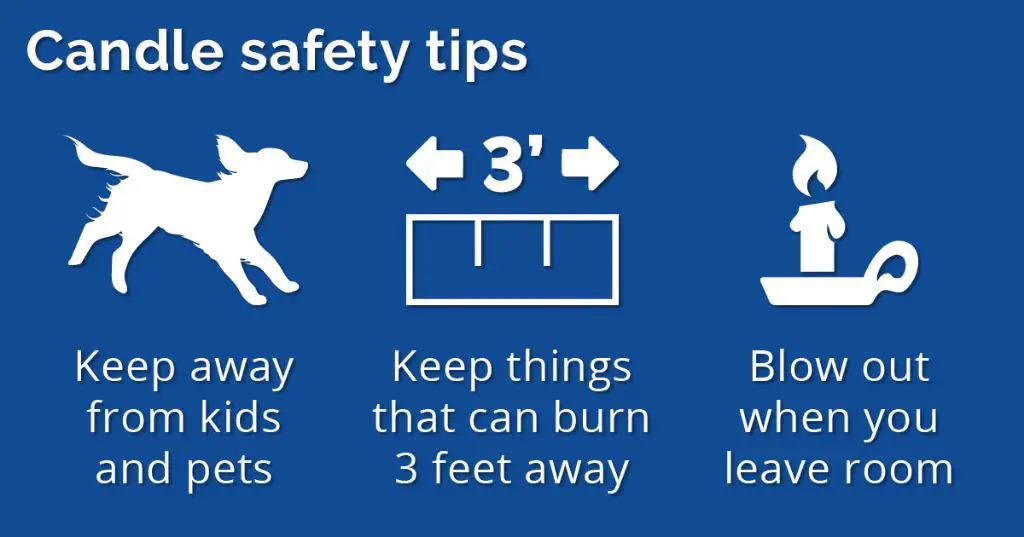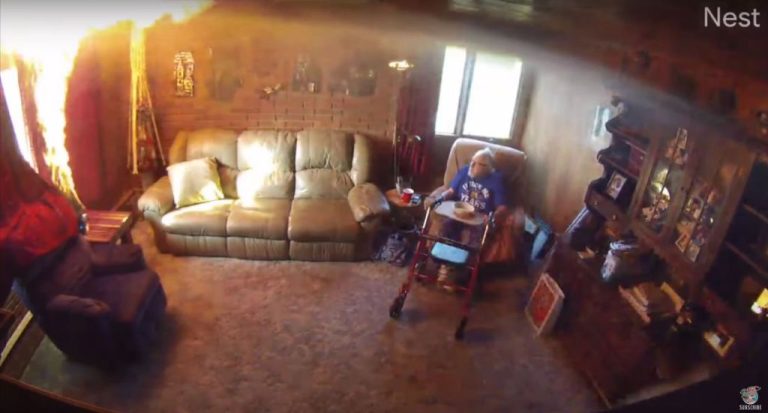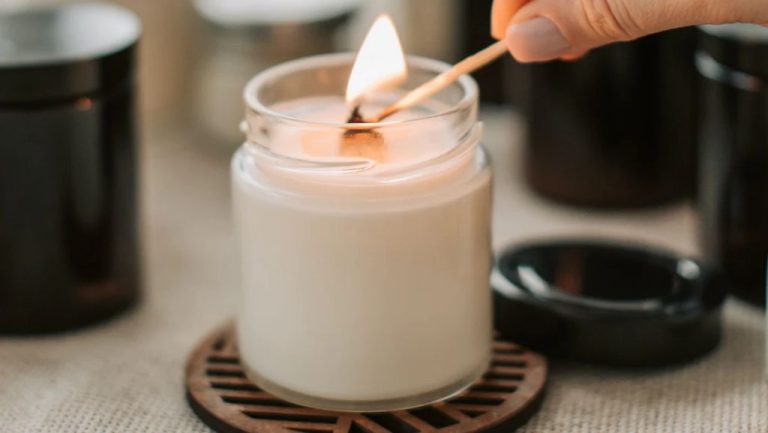What Warning To Put On Candles?
Candles are a popular decorative and fragrance item used in many homes. However, candles also pose fire risks that consumers should be aware of. According to the National Fire Protection Association (NFPA), candles caused an estimated average of 8,300 home fires per year from 2016-2020, resulting in 79 civilian deaths, 677 civilian injuries, and $298 million in direct property damage per year (NFPA).
To help mitigate these risks, warning labels on candles provide important safety information for consumers. Warning labels make people aware of potential hazards and advise on proper usage and precautions to prevent fires, injuries, and property damage. Comprehensive warning labels are an essential component of candle safety.
Fire Hazards
Candles can pose serious fire hazards if not used properly. According to the National Fire Protection Association (NFPA), candles were the cause of 4% of reported home fires, 3% of home fire deaths, 6% of home fire injuries, and 4% of direct property damage from home fires in the United States from 2011-2015. Unattended candles were the leading factor in these fires (NFPA).
The most common causes of candle fires include leaving candles unattended, placing candles too close to combustibles like curtains or furniture, or having candles tipped over or knocked over accidentally. Candle wicks also pose a hazard if they are allowed to burn down too far. Long wicks can cause high flames that can ignite nearby objects. According to the U.S. Fire Administration, over half of home candle fires start because combustible items are left or placed too close to the candle (USFA).
Warning Label Laws
In the United States, the Consumer Product Safety Commission (CPSC) requires that all candles have mandatory warning labels listing basic safety precautions. These regulations were put in place to help educate consumers and prevent injuries and property damage from candle fires. Some key requirements include:
The warning must be conspicuous and easy to read. It should use a font size of at least 10 points. Warning labels are required to be on the product itself or on a hang tag. Stickers attached to the bottom of a candle are not sufficient (Understanding the Label).
The label must include the signal word “WARNING” or “CAUTION” along with safety instructions like “Keep away from things that catch fire”, “Never leave a burning candle unattended”, and “Trim wick to 1⁄4 inch before burning” (Candle Label Requirements, Guidelines, and Best Practices).
The warning statements are mandatory and cannot be altered. However, manufacturers can customize the format and design of their labels. Candle labels in the United States must be in English, though multilingual labels are also permitted.
Other countries like Canada and the UK have similar mandatory labeling laws for candles. The specific requirements may vary slightly by region.
Warning Label Content
Warning labels on candles should be clear, concise, and use a font that is easy to read. According to the Consumer Product Safety Commission, warning labels should be in a font size of at least 10-point, with larger font sizes recommended for enhanced readability. Key information should be highlighted in bold. The warning label should be positioned on the bottom or side of the candle container and printed directly on the container if possible [1].
Typical warning label content includes: [2]
- Instructions to keep candle away from flammable objects and out of reach of children and pets
- Advisory to never leave a burning candle unattended
- Caution about allowing wax pool to reach edges of container
- Reminder to extinguish candle before it burns down to the last 1/4 inch of wax
- Statement that container may become hot while candle is burning

Phrases like “Caution!,” “Warning!,” and “Keep Away” should be bold and capitalized. Simple pictograms depicting potential hazards like fire, hot surfaces, and children can help convey risks visually.
Safe Use Tips
Candles can be used safely if proper precautions are taken. Here are some general candle safety guidelines for consumers:
Always keep candles out of reach of children and pets. Young children should never be left alone in a room with lit candles. According to the National Fire Protection Association (NFPA), kids playing with fire sources, including candles, start over one-third of home candle fires (Source: https://www.nfpa.org/education-and-research/home-fire-safety/candles).
Never leave a burning candle unattended. Always extinguish candles before leaving a room. It’s unsafe to go to sleep or leave the house with candles still burning. The NFPA reports falling asleep as the leading factor contributing to fatal candle fires (Source: https://candles.org/fire-safety-candles/).
Keep candles at least 12 inches away from anything that can burn, including curtains, upholstery, clothing, books, paper, flammable decorations and more. Place candles on a stable, heat resistant surface away from drafts (Source: https://www.nfpa.org/education-and-research/home-fire-safety/candles).
Never put lit candles on or near trees, wreaths, greenery or wrapped gifts. Keep open flames away from combustible materials. According to the NFPA, Christmas tree fires are not common but when they do occur, they are much more likely to be serious (Source: https://www.nfpa.org/education-and-research/home-fire-safety/candles).
Supervision
One of the most important rules of candle safety is to never leave a burning candle unattended. According to the National Candle Association, you should not leave the room or go to sleep while a candle is still burning. A candle flame that is left alone can easily ignite nearby combustible materials if knocked over or blown by a draft.
The FDNY warns that unattended candle fires have led to many preventable fire deaths. Things like curtains, furniture, bedding and decorations can easily catch fire if left too close to a burning candle. Always stay nearby and keep an eye on candles until they have been completely extinguished.
Location
It’s important to be mindful of where you place burning candles. According to the National Candle Association, you should keep burning candles at least 12 inches away from anything that can catch fire, such as curtains, furniture, bedding, paper, flammable decorations, etc. (Candles.org). It’s best to place candles on a sturdy, heat-resistant surface. Avoid placing candles near drafts or vents as this can cause rapid, uneven burning (Fmins.com).
Additionally, candles should always be kept out of reach of children and pets. Little hands can knock over candles, and curious pets may burn themselves or start fires. Place candles up high, out of reach, to prevent accidents. Candles are an open flame hazard that require constant adult supervision (Osmology.co).
Containers
Use sturdy, tip-resistant holders to avoid knock overs and spills. According to Candle Safety – Osmology, the holder should be heat resistant, sturdy, and large enough to catch any drips or hot melted wax. Choose holders made from non-flammable materials like metal, glass, or ceramic. Avoid using containers that are flimsy, too small, or made from flammable materials.
For jar candles or candles in glass containers, ensure the glass is heat-tempered to withstand the heat of the flame. Standard glass could crack or shatter from the heat. Place the candle on a stable, level surface away from edges where it could get knocked over. Never put a candle directly on a surface like wood or carpet where hot wax could damage the material.
Extinguishing
When extinguishing a candle, it’s important to use proper technique to avoid accidents or injuries. There are a few recommended methods for safely putting out a candle flame:
Use a candle snuffer – Candle snuffers are small metal tools designed specifically for extinguishing candle flames. To use a snuffer, simply place the bell-shaped end over the flame until it’s completely covered. This cuts off the flame’s oxygen supply and puts it out quickly and safely, without blowing smoke around or dripping wax.
Dip the wick – If you don’t have a snuffer, use metal tweezers or a wick dipper tool to gently bend the wick into the still-liquid wax or press it against the side of the container. This smothers the flame. Avoid using fingers directly on the wick as it may still be hot.
Cover with a lid – For candles in jars or containers with tight-fitting lids, simply place the lid over the top to deprive the flame of oxygen. Make sure the lid completely covers the top of the container.
Use a spoon – Carefully slide a metal spoon over the top of the flame to put it out, being cautious not to drip hot wax. This takes a gentle touch.
Never blow out a candle forcefully, as this can spread hot wax. It’s also not recommended to pour water on a candle flame as this may cause hot wax to splatter. Follow these safe techniques for clean, accident-free candle extinction.
Alternatives
Safer options like LED or flameless candles are available for those who want the ambiance of candles without the fire risk. LED candles provide a realistic flickering flame effect using battery-powered lights instead of a real flame.
According to Sun Beauty, flameless candles eliminate fire hazards since there is no actual flame that can ignite. They can be left unattended without worry.
The Brotherhood Mutual also recommends flameless candles as a safer option to reduce fire risks compared to traditional candles. The flameless design prevents potential damage from open flames.





